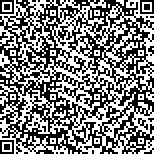| 刘鹏月,孔令玉,刘 英,等.HSD17B4通过调控氧化应激诱导STAT1表达促进肝癌细胞侵袭迁移[J].肿瘤学杂志,2025,31(6):498-507. |
| HSD17B4通过调控氧化应激诱导STAT1表达促进肝癌细胞侵袭迁移 |
| HSD17B4 Induces STAT1 Expression by Regulating Oxidative Stress to Promote Invasion and Migration of Hepatocellular Carcinoma Cells |
| 投稿时间:2024-10-16 |
| DOI:10.11735/j.issn.1671-170X.2025.06.B005 |
|
 |
| 中文关键词: 肝细胞癌 羟基类固醇脱氢酶 侵袭 迁移 氧化应激 信号转导和转录激活因子 |
| 英文关键词:hepatocellular carcinoma hydroxysteroid dehydrogenase invasion migration oxidative stress signal transduction and activator of transcription |
| 基金项目:河北省自然科学基金(H2024209068,H2023209036) |
|
| 摘要点击次数: 215 |
| 全文下载次数: 132 |
| 中文摘要: |
| 摘 要:[目的]探讨17β-羟基类固醇脱氢酶4(17β-hydroxysteroid dehydrogenase 4,HSD17B4)在肝细胞癌(hepatocellular carcinoma,HCC)恶性进展中的作用及其潜在的作用机制。[方法]采用免疫组织化学(immunohistochemistry,IHC)实验检测HCC患者癌组织和癌旁组织中HSD17B4的表达水平;将HSD17B4的干扰RNA(siHSD17B4)和过表达质粒(pCMV6-HSD17B4)转染至Huh7和HepG2细胞中,进行HSD17B4敲降和过表达处理;采用细胞划痕实验和Transwell实验检测肝癌细胞的迁移和侵袭能力;采用蛋白免疫印迹(Western blot)实验检测波形蛋白(vimentin,VIM)和基质金属蛋白酶9(matrix metalloproteinase 9,MMP9)等促侵袭迁移蛋白的表达水平;采用Western blot实验和细胞免疫荧光技术分别检测HSD17B4对信号转导和转录激活因子1(signal transduction and activator of transcription 1,STAT1)表达的影响和对磷酸化STAT1(p-STAT1)核转位的影响;采用荧光探针和比色法分别检测细胞内的活性氧(reactive oxygen species,ROS)和丙二醛(malondialdehyde,MDA),以评估HSD17B4对肝癌细胞内氧化应激的影响。[结果] HSD17B4在HCC患者癌组织中的表达量高于癌旁组织(1.569±0.218 vs 1.000±0.139,t=4.92,P=0.001);HSD17B4过表达后,Huh7和HepG2细胞的迁移能力增强(t=6.60,P=0.003;t=5.54,P=0.005),侵袭能力增强(t=5.61,P=0.013;t=9.07,P<0.001);HSD17B4敲降后,Huh7和HepG2细胞的迁移能力降低(t=4.96,P=0.008;t=6.14,P=0.004),侵袭能力也降低(t=7.06,P=0.002;t=4.57,P=0.010)。HSD17B4过表达导致肝癌细胞VIM、MMP9和STAT1的表达水平均升高(P<0.05),细胞内ROS和MDA水平均降低(P<0.05);HSD17B4敲降后则出现相反的结果(P<0.05)。HSD17B4对p-STAT1核转位的影响不明显。[结论] HSD17B4可能通过制衡细胞内氧化应激水平调控STAT1的表达从而促进HCC细胞侵袭迁移。 |
| 英文摘要: |
| Abstract: [Objective] To explore the effect of 17β-hydroxysteroid dehydrogenase 4 (HSD17B4) on invasion and migration of hepatocellular carcinoma (HCC) and the underlying mechanism. [Methods] The expression level of HSD17B4 in HCC tissues and adjacent tissues was detected by immunohistochemistry (IHC). Human HCC Huh7 and HepG2 cells were transfected with HSD17B4 interference RNA(siHSD17B4) and overexpression plasmid (pCMV6-HSD17B4) to knockdown or overexpress HSD17B4. Scratch assay and Transwell assay were used to detect the migration and invasion abilities of HCC cells. The expression levels of pro-invasion and migration proteins vimentin (VIM) and matrix metalloproteinase 9 (MMP9) were detected by Western blot. The expression levels of signal transduction and activator of transcription 1 (STAT1) and the nuclear translocation of phosphorylated STAT1 (p-STAT1) were detected by Western blot and immunofluorescence methods. Intracellular reactive oxygen species (ROS) and malondialdehyde (MDA) were detected by fluorescence probe technique and colorimetric method. [Results] The expression of HSD17B4 in HCC tissue was significantly increased compared with that in adjacent tissue (1.569±0.218 vs 1.000±0.139, t=4.92, P=0.001). After HSD17B4 overexpression, the migration ability of Huh7 and HepG2 cells was enhanced (t=6.60, P=0.003; t=5.54, P=0.005) and the invasion ability was increased (t=5.61, P=0.013, t=9.07, P<0.001). After HSD17B4 knockdown, the migration ability of Huh7 and HepG2 cells was decreased (t=4.96, P=0.008; t=6.14, P=0.004) and the invasion ability was decreased (t=7.06, P=0.002; t=4.57, P=0.010). With HSD17B4 overexpressed, the expression levels of VIM, MMP9, and STAT1 proteins were increased (P<0.05), and intracellular ROS and MDA levels were decreased (P<0.05). The opposite results were observed after HSD17B4 knockdown (P<0.05). However, the effect of HSD17B4 on the nuclear translocation of p-STAT1 was not evident. [Conclusion] HSD17B4 may induce STAT1 expression by regulating oxidative stress to promote invasion and migration of HCC cells. |
|
在线阅读
查看全文 查看/发表评论 下载PDF阅读器 |